Travel Consultants
Is your time too precious to spend long hours searching for the perfect holiday in the Azores? Looking for expert help in organizing your trip? Hire an Azores.com Travel consultant.
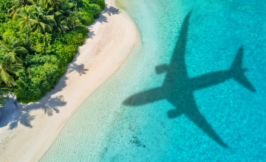
Overlooking the vast Atlantic Ocean, the Azores Archipelago offers you one of Europe’s most extraordinary diving experiences. Azores scuba diving takes you through volcanic formations, marine reserves, and crystal-clear waters where visibility often exceeds 30 meters.
From the legendary Princess Alice Bank, where you can encounter massive schools of mobula rays, to the historic Dori Wreck off São Miguel Island, Azores scuba diving reveals a unique blend of temperate and subtropical marine life. Whether you’re seeking close encounters with blue sharks, exploring lava-formed caves, or photographing vibrant coral gardens, the Azores’ nine islands provide you with year-round diving opportunities.
Key Takeaways:
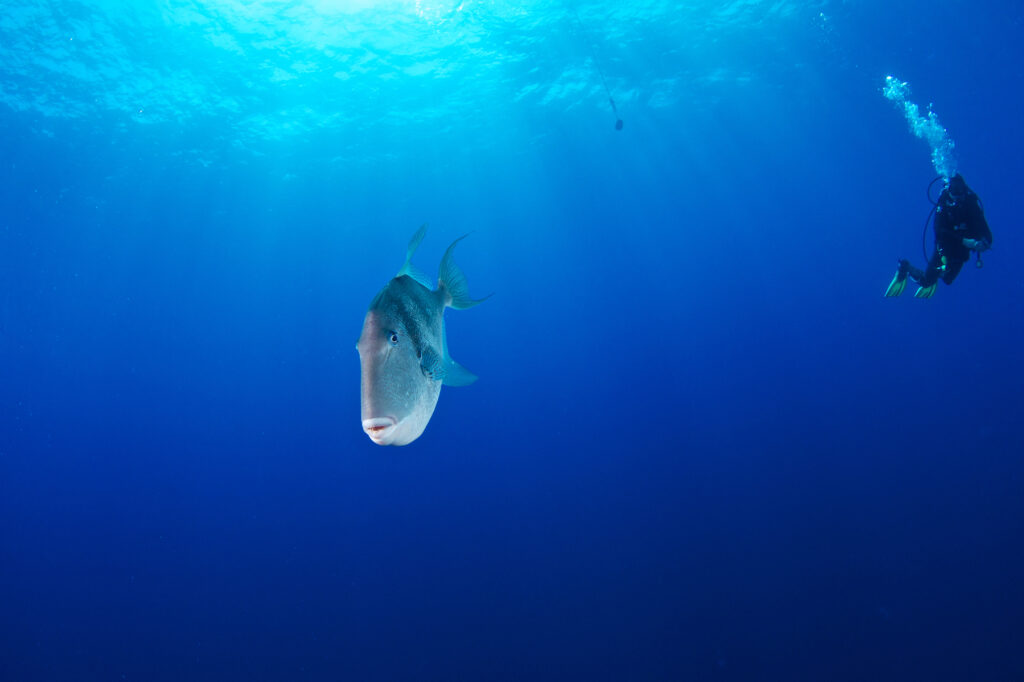
Below the surface, you’ll discover a mesmerizing underwater landscape shaped by volcanic activity. The mid-Atlantic ridge location has created dramatic formations including lava arches, caves, canyons, and towering pinnacles that rise from depths of over 100 meters. These geological features provide you with diving experiences you won’t find anywhere else in the Atlantic.
Any dive in Azorean waters offers you the chance to witness an extraordinary mix of marine life, where temperate and subtropical species converge in the heart of the Atlantic Ocean.
Plus, you’ll have opportunities to encounter various pelagic species throughout the year. During summer months (June-October), you can spot mobula rays, blue sharks, and mako sharks, especially at famous sites like Princess Alice Bank. The waters also host resident populations of groupers, moray eels, and various species of wrasse, while loggerhead turtles make occasional appearances.
With nine islands spread across the archipelago, you’ll find plenty of dive sites away from the masses. Unlike popular tropical destinations, the Azores offers you peaceful diving experiences without competing with dozens of other boats or divers.
The archipelago’s remote location and controlled tourism development mean you can explore pristine sites at your own pace. Even at renowned locations like Formigas Islets or Dollabarat Bank, you’ll rarely encounter more than a few dive boats, ensuring intimate encounters with marine life and undisturbed underwater landscapes.
Besides offering exceptional diving experiences, the Azores demonstrates strong commitment to marine conservation through its network of protected areas, including the Formigas and Dollabarat Marine Reserve.
At these protected sites, you’ll benefit from strict regulations that preserve marine ecosystems. The Azores government actively monitors marine populations, restricts fishing in key areas, and implements sustainable tourism practices. This dedication to conservation ensures you’ll continue to experience thriving marine environments and healthy populations of both resident and migratory species.
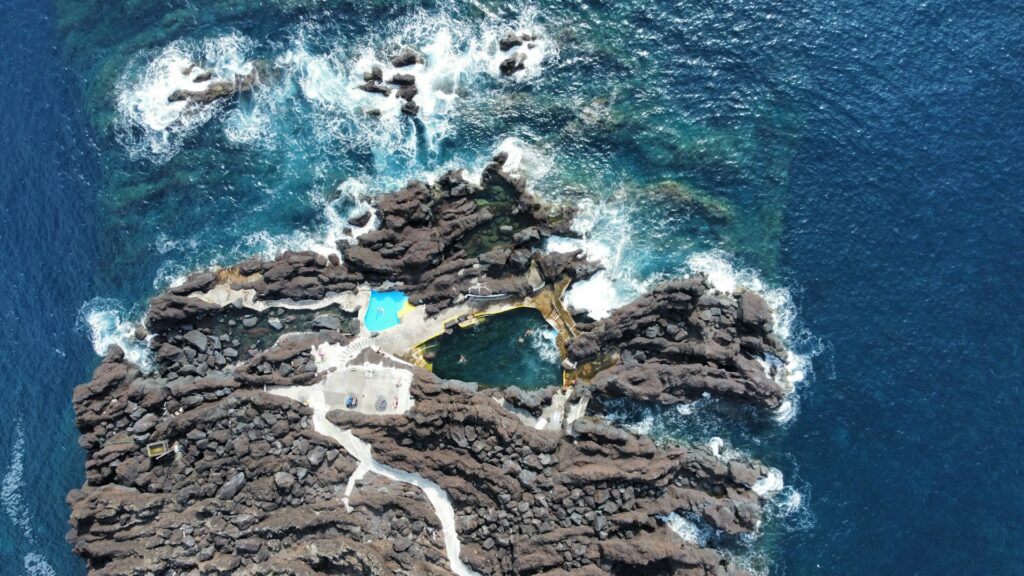
By exploring Santa Maria’s waters, you’ll discover some of the archipelago’s most diverse dive sites. The Ambrosio reef stands out as a premier location where you can encounter large schools of mobula rays, especially during summer months. The crystal-clear waters offer visibility often exceeding 25 meters, making it perfect for underwater photography.
Between the island’s numerous dive sites, you’ll find the famous Dori Wreck, a WWII Liberty ship resting at 20 meters depth. The wreck has become home to various species including groupers, moray eels, and schools of pelagic fish.
Formigas Islets and Dollabarat Bank, accessible from São Miguel, offer you some of the most thrilling diving in the Atlantic. These remote locations provide opportunities to encounter manta rays, sharks, and large pelagic fish in waters with visibility, often reaching 30 meters.
Along the channel between these two islands, you’ll find some of the archipelago’s most exciting diving opportunities. The legendary Princess Alice Bank, located offshore, offers encounters with blue sharks, makos, and massive schools of mobula rays in deep blue waters.
Bank diving here presents unique opportunities for experienced divers. The Condor Bank, a research area, allows you to explore deep-water species while the coastal sites of Baixa do Sul and Baixa da Barca offer reliable spots for observing rays and diverse reef life.
To dive Terceira is to experience a blend of history and marine life. The Cemitério das Âncoras (Anchor Graveyard) provides a unique diving experience where centuries-old anchors create an underwater museum.
Maria Vaz and Porto Martins offer you excellent shore diving opportunities with an abundant marine life. The island’s underwater topography includes lava tubes, caves, and walls covered with black coral, creating dramatic scenery for your diving adventures.
Condor Bank near these remote western islands offers you pristine diving conditions with minimal human impact. These sites feature some of the clearest waters in the archipelago, with visibility often exceeding 30 meters.
Archipelago’s westernmost dive sites reward you with encounters of unique species not commonly seen at other locations. The pristine conditions and strong currents attract large pelagics, while the volcanic formations create dramatic underwater landscapes perfect for advanced diving.
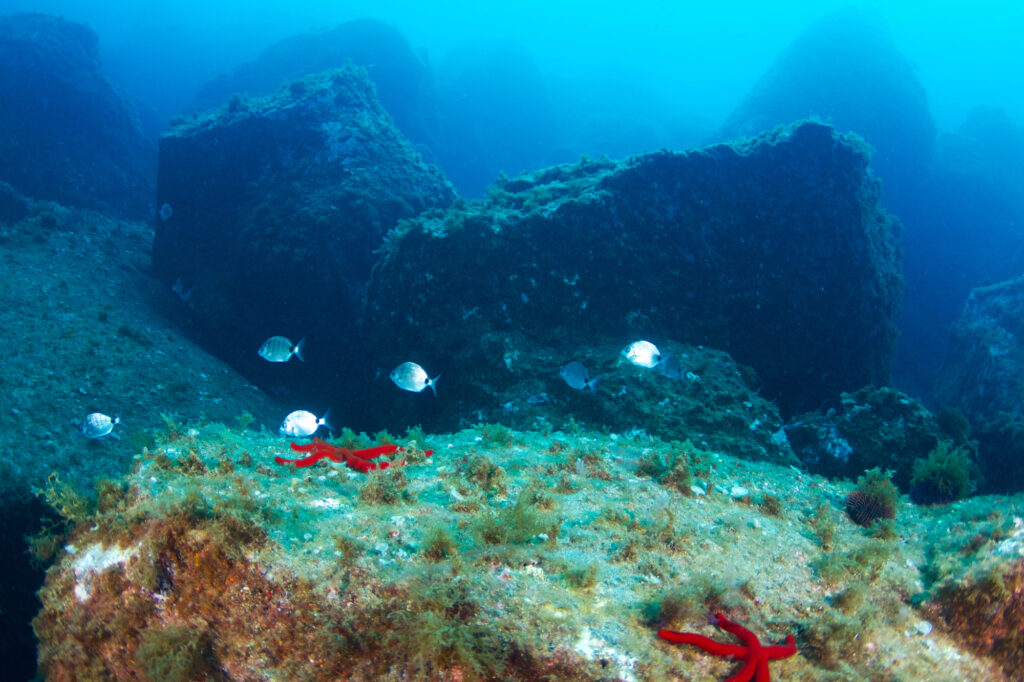
Behind the pristine waters of the Azores, you’ll discover some of the Atlantic’s most magnificent pelagic species. During summer months (June to October), you can encounter massive schools of Mobula rays, particularly at Princess Alice Bank and Ambrosio. Your chances of meeting blue sharks and makos are highest at offshore sites, while tuna, barracuda, and jacks frequently patrol the deep blue waters. If you’re exceptionally fortunate, you might even spot a rare whale shark or manta ray around Formigas and Dollabarat.
Rays of sunshine illuminate the rich marine ecosystem closer to shore, where you’ll find an abundance of dusky and island groupers, often approaching divers with curious demeanor. Your exploration of the volcanic reefs will reveal various species of moray eels, ornate wrasse, grey triggerfish, and vibrant damselfish schools, creating a colorful spectacle against the dark volcanic backdrop.
Occasional encounters with loggerhead turtles add excitement to your coastal dives, while protected black coral colonies thrive in deeper sections. You’ll discover a macro photographer’s paradise, with numerous species of nudibranchs, octopus, and cuttlefish hiding among the rocky formations. The mixing of temperate and subtropical waters creates unique conditions where you can observe species from both ecosystems coexisting.
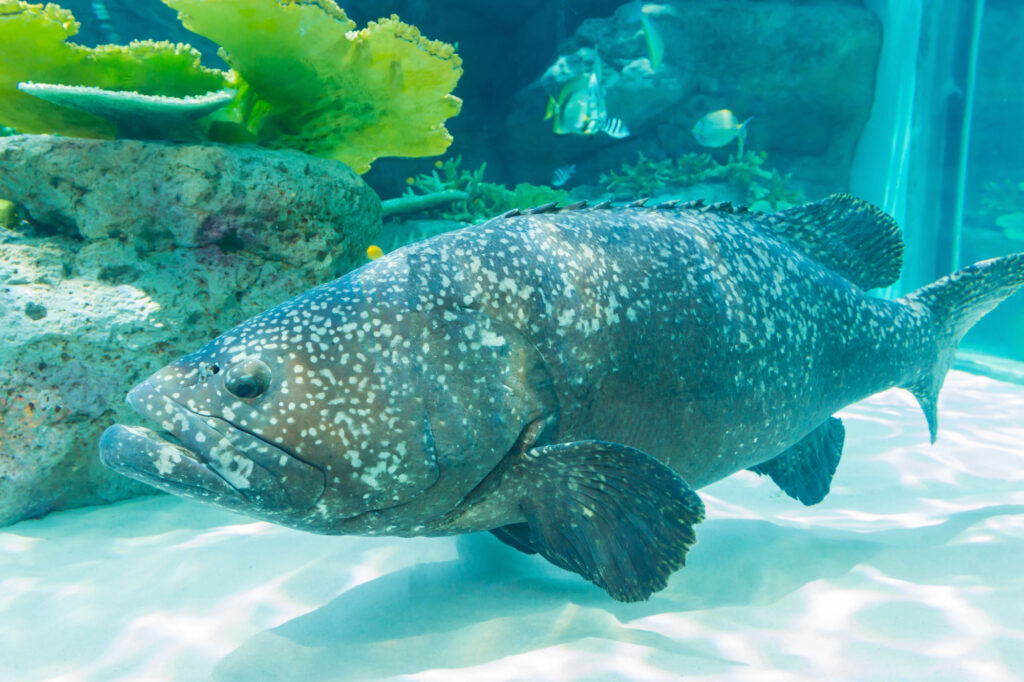
About diving in the Azores, you’ll encounter water temperatures ranging from 16°C to 24°C and visibility often exceeding 20-30 meters. The Atlantic waters provide excellent clarity, particularly during summer months. The volcanic nature of the seabed creates dramatic underwater landscapes, including caves, arches, and steep walls.
To experience the Azores underwater world, you can choose from various diving styles:
| Dive Type | Characteristics |
|---|---|
| Coastal | Easy access, suitable for beginners |
| Offshore | Advanced level, pelagic encounters |
| Cave | Technical skills required, unique formations |
| Wreck | Historical sites, artificial reefs |
| Deep | Advanced certification needed, seamounts |
Above all, the peak diving season runs from June to October, when water temperatures are warmest and sea conditions most favorable. This period also coincides with the highest likelihood of encountering pelagic species.
Indeed, during summer months, you’ll benefit from calmer seas, better visibility, and increased chances of spotting Mobula rays and various shark species at sites like Princess Alice Bank.
The minimum requirement for coastal diving is an Open Water certification, while offshore sites like Princess Alice Bank require Advanced Open Water or higher. Experience with deep diving and strong currents is imperative for challenging locations.
Cave and technical diving demand specific certifications and experience. You should be comfortable with deep water and variable conditions. For offshore sites, you’ll need to demonstrate competence with safety equipment and procedures.
Currents can be strong, especially around seamounts and offshore sites. You must carry safety equipment including surface marker buoys and be prepared for changing Atlantic conditions.
Practical diving in the Azores require careful planning and attention to weather conditions. You should always dive with reputable centers, maintain good communication with your buddy, and follow local diving protocols.
About 25 certified dive centers operate across the Azores archipelago, with the highest concentration on São Miguel, Faial, and Pico islands. Most centers are PADI or SSI certified, offering services in multiple languages and maintaining modern equipment. Recognizing quality operators is straightforward – looking for centers with strong online presence, updated safety certifications, and positive reviews from international divers.
Along with your dive planning, consider these imperative points:
Finding the right dive package requires careful consideration of your experience level and objectives:
All your diving adventures in the Azores can be perfectly complemented with a range of exciting activities that showcase the archipelago’s diverse natural wonders. Your time between dives offers excellent opportunities to explore these volcanic islands from different perspectives.
Activities in the Azores waters include observing up to 28 different cetacean species throughout the year. You can spot sperm whales from March to October, while blue whales typically pass through in spring. Your chances of successful sightings are remarkably high, with a 98% success rate during peak season.
Between your diving sessions, you can explore over 88 marked hiking trails across all nine islands, offering various difficulty levels and stunning landscapes.
To make the most of your hiking experience, you’ll find trails leading to volcanic calderas, pristine lakes, and breathtaking coastal viewpoints. Your options range from short 30-minute walks to full-day treks, with the Pico Mountain trail being the most challenging, taking you to Portugal’s highest peak at 2,351 meters.
About 30 natural thermal pools are scattered across the islands, with temperatures ranging from 22°C to 40°C, offering you perfect relaxation opportunities after diving.
Consequently, you’ll find the most renowned thermal experiences in São Miguel, including the iron-rich waters of Terra Nostra Garden and the cascade of pools at Caldeira Velha. Your visit to these geothermal wonders provides both therapeutic benefits and unique geological insights into the islands’ volcanic nature.
On the culinary front, you’ll discover a rich heritage of seafood dishes, including fresh tuna, locally caught parrotfish, and the traditional Cozido das Furnas – a meal cooked underground using natural volcanic heat.
Beyond the seafood, your gastronomic journey can include sampling Azorean wines from Pico Island’s UNESCO-listed vineyards, tasting local pineapples grown in greenhouses, and enjoying fresh dairy products from the archipelago’s grass-fed cattle. Your dining experiences will reflect the islands’ unique blend of Portuguese traditions and local innovations.
To wrap up
So, your diving adventure in the Azores promises to be unlike anything you’ve experienced before. From the dramatic volcanic formations at Princess Alice Bank to the mesmerizing encounters with mobula rays at Ambrosio, you’ll discover a world where Atlantic biodiversity thrives in crystal-clear waters. Whether you’re exploring the WWII Dori wreck or drifting along the pristine reefs of Formigas, your underwater journey through these nine islands will reward you with unique marine life sightings and unforgettable diving moments. Pack your gear and get ready for an exceptional Atlantic diving experience that will exceed your expectations.
Are you starting to plan your trip to the Azores? Check out our Multi-Island Tour packages and daily tours for scuba diving experiences.
The top spots for big marine encounters are Princess Alice Bank (famous for mobula rays and blue sharks), Formigas Islets (known for manta rays and various shark species), and Ambrosio near Santa Maria (excellent for mobula rays). These offshore sites typically require advanced certification and good weather conditions.
The top spots for big marine encounters are Princess Alice Bank (famous for mobula rays and blue sharks), Formigas Islets (known for manta rays and various shark species), and Ambrosio near Santa Maria (excellent for mobula rays). These offshore sites typically require advanced certification and good weather conditions.
The prime diving season runs from June to October when water temperatures range from 20-24°C (68-75°F) and sea conditions are calmest. This period also coincides with peak pelagic activity, offering the best chances to encounter mobula rays, sharks, and other large marine species.
For coastal sites, an Open Water certification is sufficient. However, for offshore sites like Princess Alice Bank and Formigas, Advanced Open Water certification is required. Some locations also recommend additional experience due to depth and potential currents. Nitrox certification is beneficial for extended bottom times.
The Azores offers diverse marine encounters including mobula rays, blue sharks, mako sharks, dusky groupers, various species of moray eels, barracuda, tuna, and octopus. In coastal areas, you’ll find numerous reef fish, nudibranchs, and occasionally loggerhead turtles. During summer months, the chances of seeing pelagic species increase significantly.
Visibility typically ranges from 20-30 meters (65-98 feet). Water temperatures vary seasonally from 16-24°C (61-75°F). Currents can be strong, especially at offshore sites. Most diving is boat-based, with some sites requiring longer journeys. The volcanic origin of the islands creates unique underwater topography including caves, arches, and dramatic walls.
São Miguel, the largest island, offers excellent diving infrastructure with multiple dive centers and easy accessibility. Faial and Pico islands are also well-equipped and serve as primary bases for offshore diving expeditions. Santa Maria provides great diving opportunities with established dive operators, particularly for ray encounters.
The archipelago offers several distinctive diving experiences, including the Anchor Graveyard near Terceira, volcanic caves at Ilhéus das Cabras, and the WWII Dori wreck off São Miguel. The underwater volcanic landscape creates unique formations, and the mixing of temperate and subtropical waters results in exceptional marine biodiversity not found elsewhere in Europe.